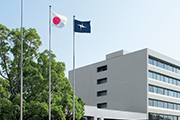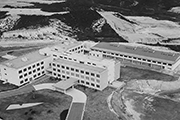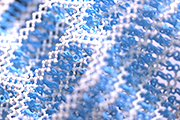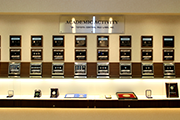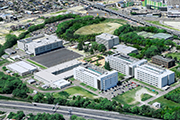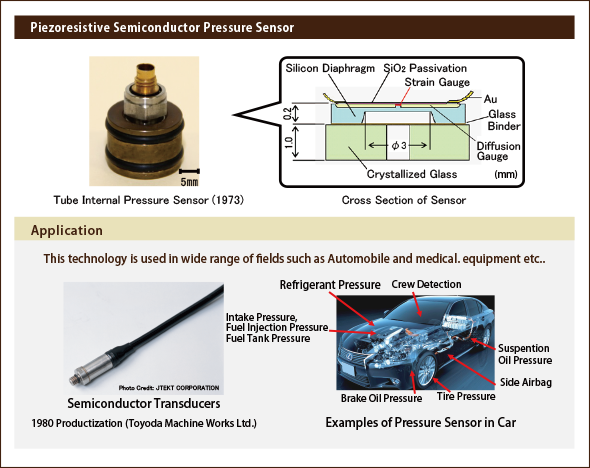- HOME
- COMPANY INFORMATION
- REPRESENTATIVE AWARDS
-
RESEARCH & DEVELOPMENT
PROJECT
-

Undertaking the Challenge of Transforming Energy Systems to Achieve a Carbon-neutral Society
-

Realizing a Sustainable, Circular Mobility Society
-

Creating Forms of Manufacturing for the Next Generation
-

Human Centered Space Design for Well-being
-

Creating the Future of Mobility Leading to Next Generations
-

Conceiving Breakthroughs Ahead of Their Time
CORE TECHNOLOGY AREA
-
- List of Selected Papers
-
Company Information
- Recruitment
6th "One Step on Electro-Technology"
[ Theme ] Piezoresistive Semiconductor Pressure Sensor
[ Award Date ] Mar. 21, 2013
[ Winning Overview ]
"One Step on Electro-Technology" was established in 2008 by the Institute of Electrical Engineers of Japan to commemorate the historical technical achievements in electrotechnology and contribute to its future development. This sensor was selected as the sixth "One Step on Electro-Technology" in 2013.
[ Features of the Technology ]
The first piezoresistive semiconductor pressure sensor was invented by our company in 1964.
This sensor has a 3D structure with a silicon diaphragm, which is now in wide use, and was developed during the 1970’ s and subsequently commercialized. This sensor was fabricated using microelectromechanical systems (MEMS) technology and is now recognized as a typical device in this field, although a remarkable example of world-class pioneering in MEMS technology.
European Inventor Award 2014 Popular Prize -European Patent Office
[ Theme ] The QR (Quick Response) code
[ Award Date ] Jun. 17, 2014
[ Winning Overview ]
The "European Inventor Award" is the most important award for technical, social and economic inventions in Europe. Launched in 2006, it is awarded annually by the European Patent Office (EPO). The Quick Response (QR) code, developed by DENSO WAVE INC. and TOYOTA CENTRAL R&D LABS., INC. in 1994, was nominated for the category of "Non-European countries" in 2014. It was selected as the winner of the Popular Prize from 15 nominated finalists among all categories.
[ Features of the Technology ]
The QR code is capable of handling 350 times more data than a conventional bar code because this code can store data in both the horizontal and vertical directions. It is possible to deal with all types of data, such as alphanumeric characters, Kanji, Kana, Hiragana, symbols, binary, and control codes. The quick reading speed is achieved by the positional arrangement of detection patterns in 3 corners. In addition, the QR code can theoretically suppress the probability of false recognition to less than 1 in 1,000,000,000.
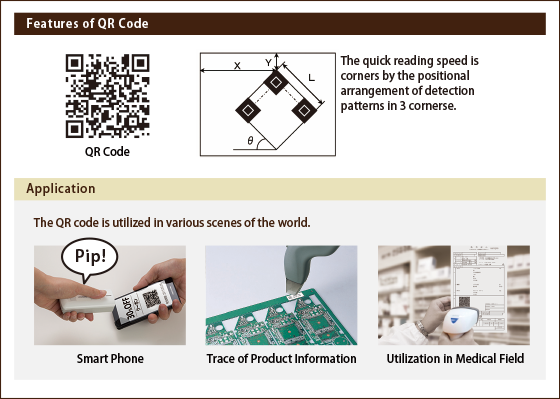
Company Information









